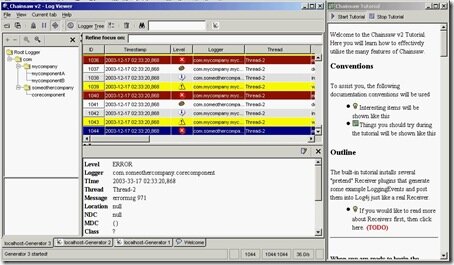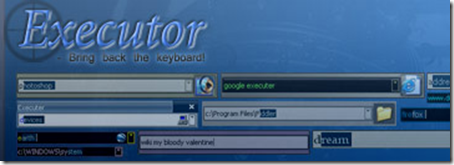The -XX:+HeapDump option can be used to observe memory allocation in a running Java application by taking snapshots of the heap over time. Another way to get heap dumps is to use the _JAVA_HEAPDUMP environment variable; setting this environment variable allows memory snapshots to be taken without making any modifications to the Java command line. In order to enable this functionality, either use the command-line option or set the environment variable (for example, export _JAVA_HEAPDUMP=1) before starting the Java application.
The output is similar to that produced by the -Xrunhprof:heap=dump option except that the thread and trace information is not printed to the output file.
With the -XX:+HeapDump option enabled, each time the process is sent a SIGQUIT signal, the Java VM produces a snapshot of the Java heap in hprof ASCII format. The name of the file has the following format: java_<pid>_<date>_<time>_heapDump.hprof.txt.
If _JAVA_HEAPDUMP_ONLY is set, then heap dumps are triggered by SIGVTALRM instead of SIGQUIT for this option. Only the heap dump is produced; that is, the thread and trace dump of the application to stdout is suppressed. Setting the _JAVA_BINARY_HEAPDUMP environment variable along with _JAVA_HEAPDUMP_ONLY produces a binary format heap dump when the SIGVTALRM is sent to the process instead of an ASCII one.
In addition to -XX:+HeapDump, there are three other HeapDump options available: -XX:+HeapDumpOnCtrlBreak , -XX:+HeapDumpOnOutOfMemoryError, and -XX:+HeapDumpOnly.
-XX:+HeapDumpOnCtrlBreak
The -XX:+HeapDumpOnCtrlBreak option is available beginning with SDK 1.4.2.11 and JDK 1.5.0.05. It enables the ability to take snapshots of the Java heap when a SIGQUIT signal is sent to the Java process without using the JVMTI-based -Xrunhprof:heap=dumpoption. This option is similar to -XX:+HeapDump except the output format is in binary hprof format and the output is placed into a filename with the following naming convention: java_<pid>.hprof.<millitime>.
If the environment variable _JAVA_HEAPDUMP is set and this option is specified, then both hprof ASCII and binary dump files are created when a SIGQUIT is sent to the process. For example, the following file names are created: java_27298.hprof.1152743593943 andjava_27298_060712_153313_heapDump.hprof.txt.
If JAVA_BINARY_HEAPDUMP is set and the -Xrunhprof:heap=dump command is given, then both hprof ASCII and binary files are produced for this option.
-XX:+HeapDumpOnOutOfMemoryError
 The-XX:+HeapDumpOnOutOfMemoryError option is available beginning with SDK 1.4.2.11 and JDK 1.5.0.04. This option enables dumping of the Java heap when an “Out Of Memory” error condition occurs in the Java VM. The heap dump file name defaults tojava_pid<pid>.hprof in the current working directory. The option -XX:HeapDumpPath=file may be used to specify the heap dump file name or a directory where the heap dump file should be created. The only heap dump format generated by the -XX:+HeapDumpOnOutOfMemoryError option is the hprof binary format.
The-XX:+HeapDumpOnOutOfMemoryError option is available beginning with SDK 1.4.2.11 and JDK 1.5.0.04. This option enables dumping of the Java heap when an “Out Of Memory” error condition occurs in the Java VM. The heap dump file name defaults tojava_pid<pid>.hprof in the current working directory. The option -XX:HeapDumpPath=file may be used to specify the heap dump file name or a directory where the heap dump file should be created. The only heap dump format generated by the -XX:+HeapDumpOnOutOfMemoryError option is the hprof binary format.
One known issue exists: the-XX:+HeapDumpOnOutOfMemoryError option does not work with the low-pause collector (option -XX:+UseConcMarkSweepGC).
-XX:+HeapDumpOnly
 Starting with SDK 1.4.2.11 and JDK 1.5.0.05, the -XX:+HeapDumpOnly option or the _JAVA_HEAPDUMP_ONLY environment variable can be used to enable heap dumps using the SIGVTALRM signal (signal 20). This interface is provided to separate the generation of thread and trace information triggered via SIGQUIT from the heap dump information. If the-XX:+HeapDumpOnly option is specified or the_JAVA_HEAPDUMP_ONLY environment variable is set, then the heap dump functionality is triggered by sending SIGVTALRM to the process. The printing of thread and trace information to stdout is suppressed.
Starting with SDK 1.4.2.11 and JDK 1.5.0.05, the -XX:+HeapDumpOnly option or the _JAVA_HEAPDUMP_ONLY environment variable can be used to enable heap dumps using the SIGVTALRM signal (signal 20). This interface is provided to separate the generation of thread and trace information triggered via SIGQUIT from the heap dump information. If the-XX:+HeapDumpOnly option is specified or the_JAVA_HEAPDUMP_ONLY environment variable is set, then the heap dump functionality is triggered by sending SIGVTALRM to the process. The printing of thread and trace information to stdout is suppressed.
The heap dump is written to a file with the following filename format: java_<pid>_<date>_<time>_heapDump.hprof.txt.
The default output format is ASCII. The output format can be changed to hprof binary format by setting the _JAVA_BINARY_HEAPDUMPenvironment variable. This environment variable can also be used with the -XX:+HeapDump option to generate hprof binary format with the SIGQUIT signal.
Using Heap Dumps to Monitor Memory Usage
By creating a series of heap dump snapshots, you can see how the number and size of objects varies over time. It is a good idea to collect at least three snapshots. The first one serves as a baseline. It should be taken after the application has finished initializing and has been running for a short time. The second snapshot should be taken after the residual heap size has grown significantly. Try to take the last snapshot just before the heap has grown to a point where it causes problems resulting in the application spending the majority of its time doing full GCs. If you take other snapshots, spread them out evenly based on residual heap size throughout the running of the application.
Popularity: 2% [?]


